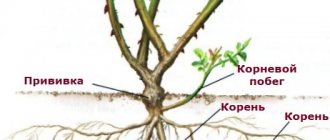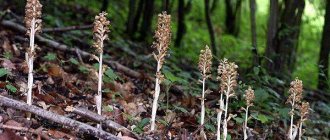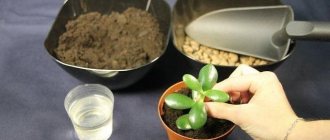What does a terry rose hip look like?
Terry varieties are called decorative varieties, usually hybrids of wrinkled rose hips, close in appearance and characteristics to garden roses. These shrubs reach about 1.5-2 m in height and have a developed root system with many shoots. The branches of terry rosehip are covered with small or large thorns.
From May and throughout the summer, the plant bears fragrant buds on annual shoots. The flowers have a complex structure, each of them consists of 40-60 petals. Terry buds look bright, impressive, and attract attention.
Terry rosehips bear scanty fruit or do not produce berries at all
Distribution of the plant in nature
About 400 varieties of rose hips are known throughout the world, mostly growing only in a certain area, and there are tens of thousands of cultivated varieties.
More than half of the species grow in Russia and neighboring countries.
The Himalayas are considered the birthplace of rose hips. Dense thickets of shrubs can often be found in the most favorable conditions for it in the Mediterranean. The culture has become more widespread in the forest part, as well as along river ravines and wet meadows, steppes and plains of the temperate zone and subtropics of the Northern Hemisphere, as well as in some mountainous areas - throughout Russia, the Caucasus, Europe and Central Asia.
The plant is not picky about soil and grows well in loamy, sunlit places of moderate humidity, so different types of rose hips are found on all continents except the Arctic - from the Arctic Circle to the American continents, Australia and New Zealand.
Varieties of terry rose hips
Terry rose hips are represented by a large number of hybrid varieties. Species are classified primarily by the color of the buds.
Yellow terry rosehip
Yellow terry rose hips are especially popular due to the bright sunny or honey shades of the buds. Looks good against the background of greenery in the garden, combined with plants with white or red flowering.
Agnes
A hybrid variety up to 2.5 m above the ground is characterized by increased resistance to unfavorable growing conditions and looks good in borders and hedges. At the beginning of summer it bears single creamy yellow double buds, consisting of 40-80 petals each. The flowers are lighter at the edges and become rich amber towards the middle. The Agnes variety exudes a pleasant fruity aroma. The buds reach 7 cm in diameter.
Rosehip variety Agnes can bloom again in early autumn
Rugelda
A hybrid of wrinkled rose hips that re-blooms in early autumn and rises up to 2 m above the ground. It has glossy dark green leaves and produces lemon-yellow buds up to 9 cm wide with reddish edges in June. Individual flowers may form small corymbs. Rosehip Rugelda has good resistance to powdery mildew and black spot, and is suitable for hedges and artistic groups.
The shoots of the rosehip Rugelda are abundantly covered with thorns
Red terry rosehip
Decorative double rosehip with red flowering looks impressive in any garden. With its help, it is convenient to place accents on your summer cottage and highlight areas that require special attention.
Kaiserin ties Nordens
A tall shrub up to 2 m above ground level has small dark green leaves with a wrinkled surface. It enters the decorative period at the end of May; in mid-summer it can bloom again. Brings large double buds of a rich red-raspberry hue, collected in inflorescences.
The rose hip variety Kaiserin is highly frost-resistant.
Hansaland
A hybrid of wrinkled rose hips that reblooms in mid to late summer, grows up to 1.8m and spreads 1m wide. It is distinguished by rich green leaves with a glossy surface and produces bright red terry-type buds up to 7 cm in diameter. It blooms very profusely and looks good in hedges.
The Hansaland variety is immune to blight and powdery mildew.
Rosehip with double pink flowers
Photos of pink terry rose hips demonstrate that the bush looks very romantic in the garden and helps create an atmosphere of carefree and lightness. Suitable for single planting, but more often used in artistic groups with bright red or white flowering perennials.
Muscosa
The terry rose hips of the Muscoza variety are low varieties and grow on average up to 1 m. The leaves of the shrub are large and matte, the shoots are covered with thin, frequent thorns. The variety blooms with densely double pink spherical buds, consisting of 100-120 petals, single and in small inflorescences. It exudes a strong pleasant aroma and tolerates winter cold well.
The buds of the Muscosa variety reach 7 cm in diameter
Hansa
A beautiful plant up to 2 m tall has very abundant flowering. Produces fragrant pink-violet buds up to 10 cm wide, each consisting of 30-40 petals. Well suited for group and single plantings, used in hedges. At the end of summer, with proper care, it can bloom again.
Attention! Hansa is one of the abundantly fruiting varieties and produces large, tasty berries.
The Hanza variety winters well in the northern regions
White terry rosehip
Bushes of white terry rose hips become a real decoration of the garden. They look equally impressive in sunny areas and in partial shade, and go well with most other flowering plants.
Lac Majeau
A vigorous shrub up to 2 m bears large oval buds of a white hue, collected in inflorescences of up to five pieces. It emits a strong sweet smell and remains decorative from late June to mid-September. White terry fragrant rosehip bears red fruits after flowering; they do not have valuable taste, but they look attractive.
Variety Lac Mezhu has shoots with weak and soft thorns
Alba Meidiland
The unpretentious beautiful variety Alba Maidiland blooms with lush small terry buds of a white hue. The flowers are collected in corymbs of up to ten pieces and emit a faint pleasant smell. They do not require pruning at the end of the decorative period, since they fall off on their own. The shrub is low, only up to 70 cm above the ground surface, but at the same time it spreads up to 2 m in diameter.
The Alba Maidiland variety blooms from mid-June to September
Description of ornamental shrub
About fifty species of rose hips grow in Russian gardens, four hundred - in various countries of the world. Shrubs with double buds are especially valued by gardeners. Among them are the variety Agnes with yellow flowers, Kaiserin des Nordens, whose bushes are strewn with carmine-red terry buds. And Konrad Ferdinand Meyer has white, silver-pink buds; in the Nova Zembla variety they are soft cream.
Densely double flowers of a spherical shape of a rich pink tone are distinguished by the Muscosa variety. The Pink Grotendorst shrub is interesting. Its flowers with jagged edges like a carnation attract with a pearlescent pink hue and a delicate aroma.
All ornamental shrubs have a height of eighty centimeters to one and a half meters.
The powerful root system of the plant produces many offspring. The shoots of the bush are covered with thorns, both large and small, depending on the variety. On annual erect stems, short branches with fragrant flowers develop the following year. The plant blooms in May.
On ornamental bushes, berries with seeds develop small, barely noticeable and are not of particular value. Rose hips with bright double flowers of various colors are grown to create an original site design.
Planting and caring for terry rose hips
Terry rose hips generally have the same care requirements as other varieties of the crop. Decorative varieties are distinguished by good endurance and strong immunity, but require regular fertilizing and haircuts.
Requirements for place and soil
Terry rose hips tolerate light shading well. But he feels most comfortable in illuminated areas with shelter from the wind. The bush requires moist soil, but not swampy. It should be neutral in composition; the culture does not develop well on acidic or alkaline soil.
How to plant correctly
Planting is best done in the fall - in October or early November. The algorithm looks like this:
- in the selected area, dig up the soil, if it is acidified, add compost, lime and rotted manure;
- make a hole no more than 50 cm deep - it should be twice the size of the roots of the seedling;
- a drainage layer is poured onto the bottom of the depression and the hole is filled to the middle with a mixture of garden soil, compost and peat;
- the seedling is cut off, leaving 20 cm of the underground part and 10 cm of shoots;
- The plant is immersed in the prepared hole and the roots are straightened, and then covered with the remains of the soil mixture.
When planting, the root collar is deepened to 8 cm. The seedling is watered abundantly and the tree trunk is immediately sprinkled with sawdust for mulching.
Advice! In the northern regions, the plant can be planted in mid-spring or early autumn, depending on weather conditions.
When and what to fertilize
It is necessary to feed terry rose hips for the first time in the third year after planting. The crop accepts nitrogen fertilizers best. They are applied in an amount of about 100 g for each bush in spring and summer - at the beginning of the growing season, before flowering and at the end. After harvesting, terry rose hips can be fed with potassium and phosphorus - 150-170 g of minerals per plant.
Once every three years, it is recommended to scatter organic matter under the rose hips - rotted manure or compost.
Trimming
Decorative terry rose hips require regular pruning. In the second year of life, weakened shoots are removed from the bush, leaving only the strongest and healthiest. In subsequent seasons, aging branches are regularly removed. A neat bush should consist of 4-5 well-developed shoots.
Every year, decorative pruning is carried out for terry rose hips. During this process, all diseased, broken and dried parts that interfere with the development of the bush are removed.
Preparing for winter
Most varietal terry rose hips tolerate winter cold well. But with the onset of autumn, it is necessary to fill the tree trunk circle with a 10 cm layer of peat or compost, as well as add fallen leaves and straw. Young plants are covered with burlap or lutrasil along the crown, and flexible shoots are tied up.
Diseases and pests of shrubs, combating them
Rosehip diseases are associated with pathogenic fungi, which actively multiply and destroy the plant during humid and hot summers:
- Powdery mildew causes a white coating to appear on the leaves and buds. The plant begins to lag behind in development, shoots do not appear on it, the flowers dry out and fall off. Resistance to the disease increases if it is promptly fed with phosphorus-potassium fertilizers.
- Infection with rust fungus is determined by spots and brown stripes on the underside of the leaf. The disease is transmitted by insects.
- Sooty fungus is spread by thrips and aphids. The black coating on the leaves of the rosehip slows down the processes of photosynthesis and respiration, and it begins to weaken.
Fungicides will save you from diseases. Among them, Fundazol is the most effective. They are sprayed with it for both medicinal and preventive purposes. Before the procedure, dissolve one gram of powder in a liter of water. Treatment with Bordeaux mixture and colloidal sulfur is also used.
Among the pests that pose a danger to rose hips are spider mites, rose hip flies, and rose hip flies. If parasites are detected, it is necessary to treat the bushes with insecticides such as Confidor. The long-acting drug eliminates aphids, whiteflies, spider mites, and their larvae. Folk remedies include treatment with tobacco dust and a solution of laundry soap. Timely pruning of shrubs and loosening of the soil will prevent the appearance of diseases and pests on rose hips.
Reproduction methods
On the site, terry rose hips can be propagated in several ways:
- Seeds. The fruits for planting material are collected in August, and the seeds are stratified in the refrigerator until spring. In March, the seeds are buried in the soil in pots or boxes and the seedlings are grown at home until the fall or until the next season.
- Dividing the bush. An adult plant at the age of 5-6 years can be dug up and divided into several parts along the rhizome in order to immediately plant it in separate holes.
- Offspring. Rose hips produce abundant root shoots. Strong shoots up to 40 cm in height can be separated with a shovel and planted in a separate hole.
- By cuttings. At the end of June, green shoots are cut into 10 cm pieces, soaked in water, and then grown in a container until autumn and transferred to a permanent place.
Attention! The most effective and convenient method of propagation is dividing the bush. When grown from seed, double rose hips may not retain varietal characteristics.
Undeniable advantages
The rugosa rose, or wrinkled rose, which has mostly bright colors, is very common in the gardens and parks of our country. But it also has a white-flowered form. Rosa Rugosa Alba is a white rose hip whose bush grows up to 2 meters. It blooms all summer and autumn; on one branch you can see both bright red fruits and white flowers. The fleshy, flattened-oblong berries contain up to 2.7% vitamin C.
The bush is powerful with straight branches strewn with thorns. The first white-flowered hybrids of Rosa rugosa were Paulia roses, with beautiful simple and delicate flowers. All types of rose hips are full of charm, they all have beneficial properties - their fruits contain more vitamin C than apples and even lemons. A thorny bush can serve as a reliable and beautiful fence for a site. Fragrant flowers fill the air with aromas. Rose hips are propagated in different ways - by seeds, seedlings, root suckers, dividing the bush, by green cuttings and some other methods.











